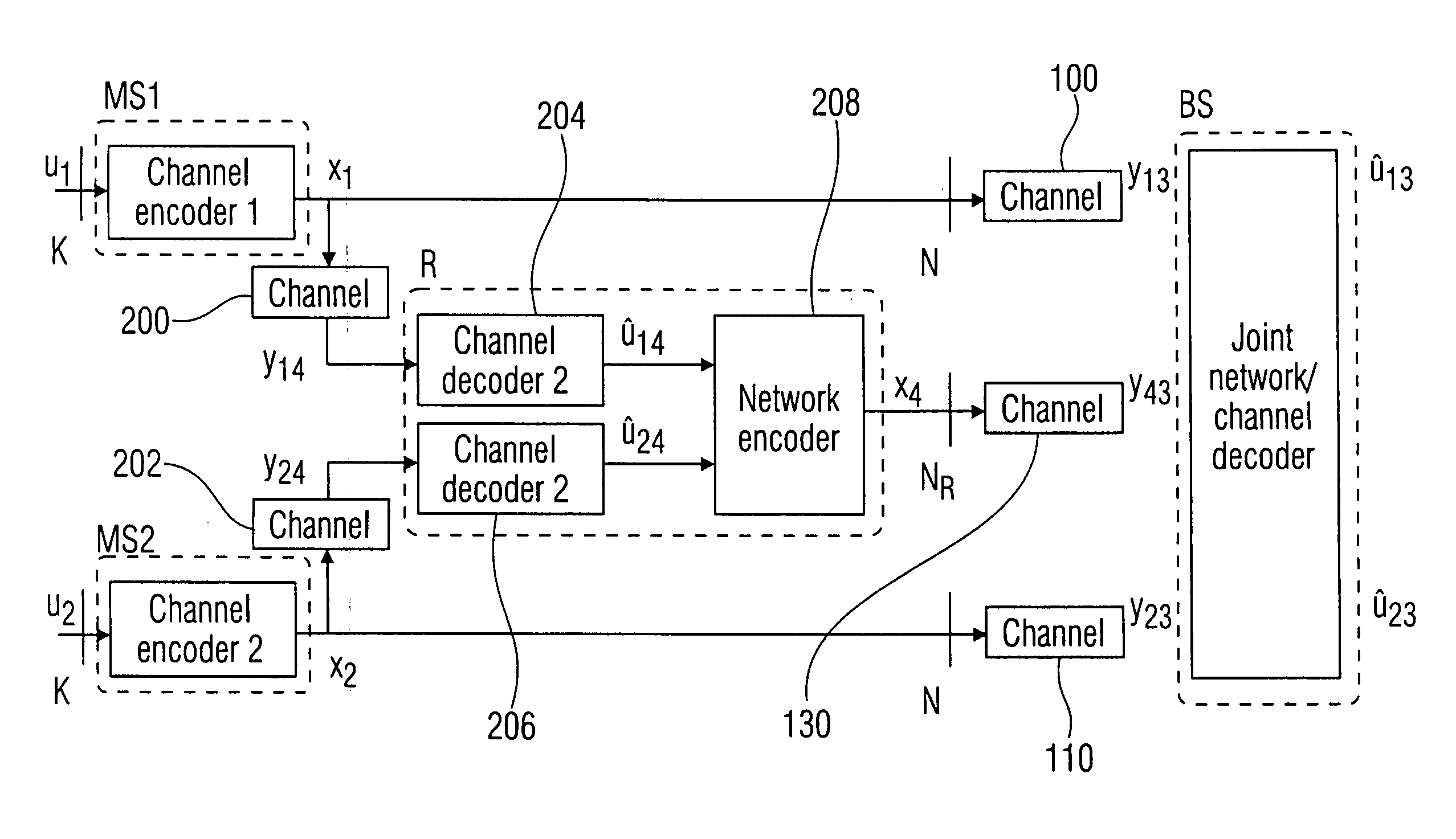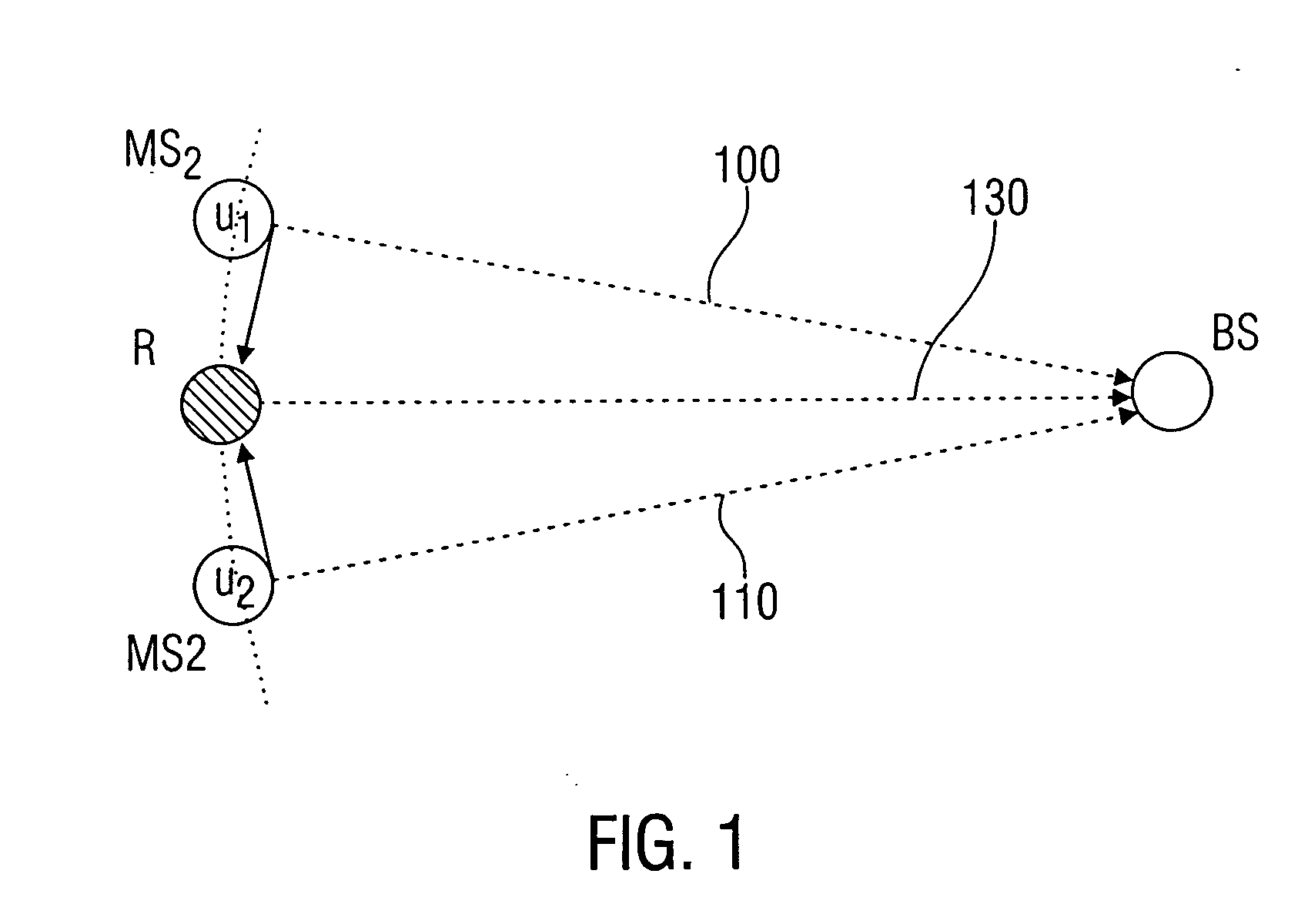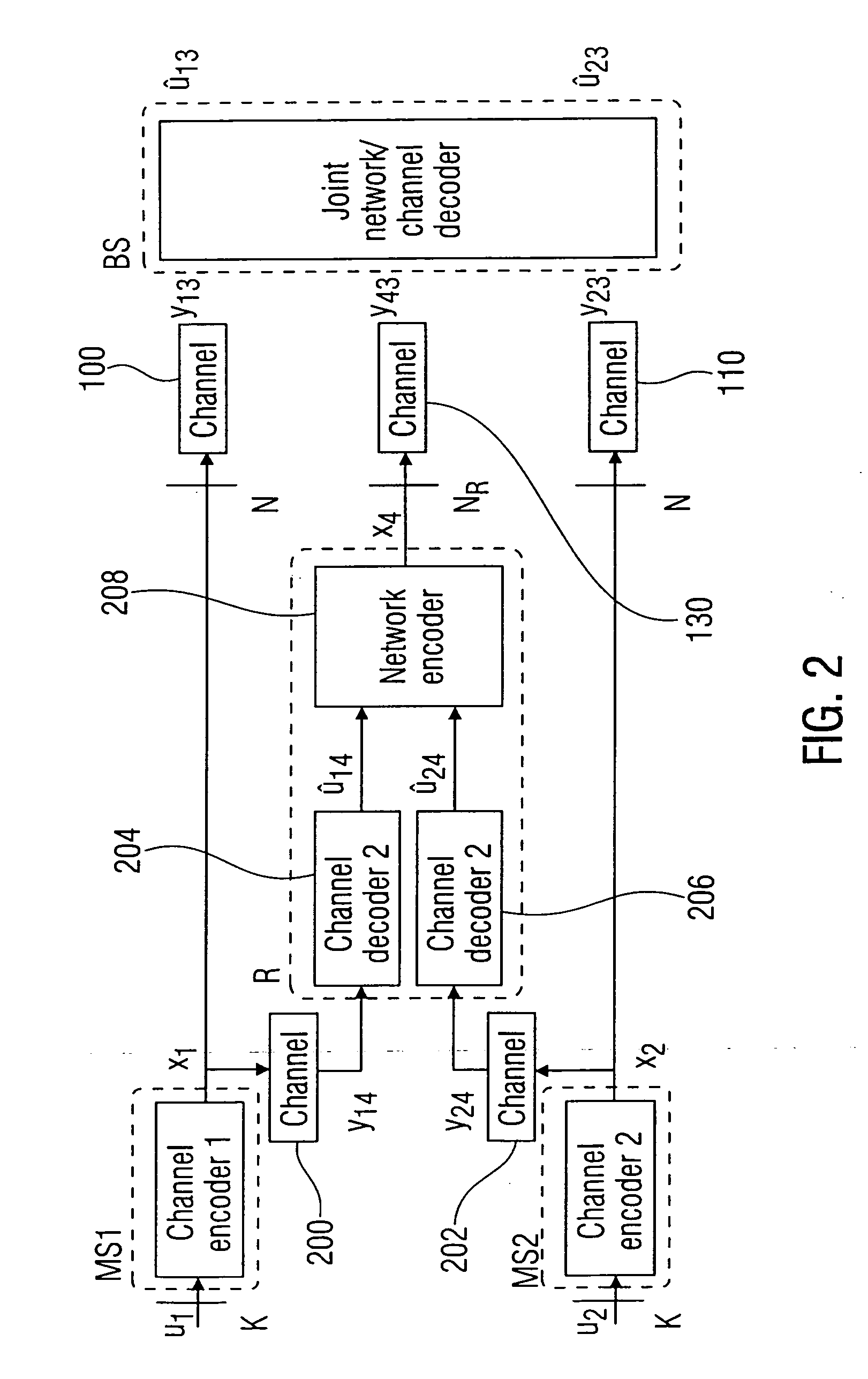Communication relay apparatus and communication receiver
a relay apparatus and communication receiver technology, applied in the field of digital communication networks, can solve problems such as providing sub-optimal data transmission opportunities
- Summary
- Abstract
- Description
- Claims
- Application Information
AI Technical Summary
Benefits of technology
Problems solved by technology
Method used
Image
Examples
Embodiment Construction
[0034] Equal or similar elements are denoted with equal or similar reference signs, wherein a repetition of the explanation of these elements is omitted.
[0035] In a network with two sources, one relay and one sink (e.g. uplink in a cellular based mobile communication system as shown in FIG. 1) the two sources (for example users) MS1 and MS2 want to transmit statistically independent data which are segmented in blocks u1 and u2 with the block length K to the sink (base station) BS. In order to support the transmission, even in the case of a weak first channel 100 or a weak channel 110, a relay R is used which is provided with data from a first source MS1 and a second source MS2. The relay R can then transmit the information received from the first and second sources MS1 and MS2 via the relay channel 130 to the sink BS.
[0036] A block diagram of an embodiment of the inventive approach is depicted in FIG. 2. The information units (e.g. bits) u1 and u2 are protected against transmissio...
PUM
 Login to View More
Login to View More Abstract
Description
Claims
Application Information
 Login to View More
Login to View More - R&D
- Intellectual Property
- Life Sciences
- Materials
- Tech Scout
- Unparalleled Data Quality
- Higher Quality Content
- 60% Fewer Hallucinations
Browse by: Latest US Patents, China's latest patents, Technical Efficacy Thesaurus, Application Domain, Technology Topic, Popular Technical Reports.
© 2025 PatSnap. All rights reserved.Legal|Privacy policy|Modern Slavery Act Transparency Statement|Sitemap|About US| Contact US: help@patsnap.com



